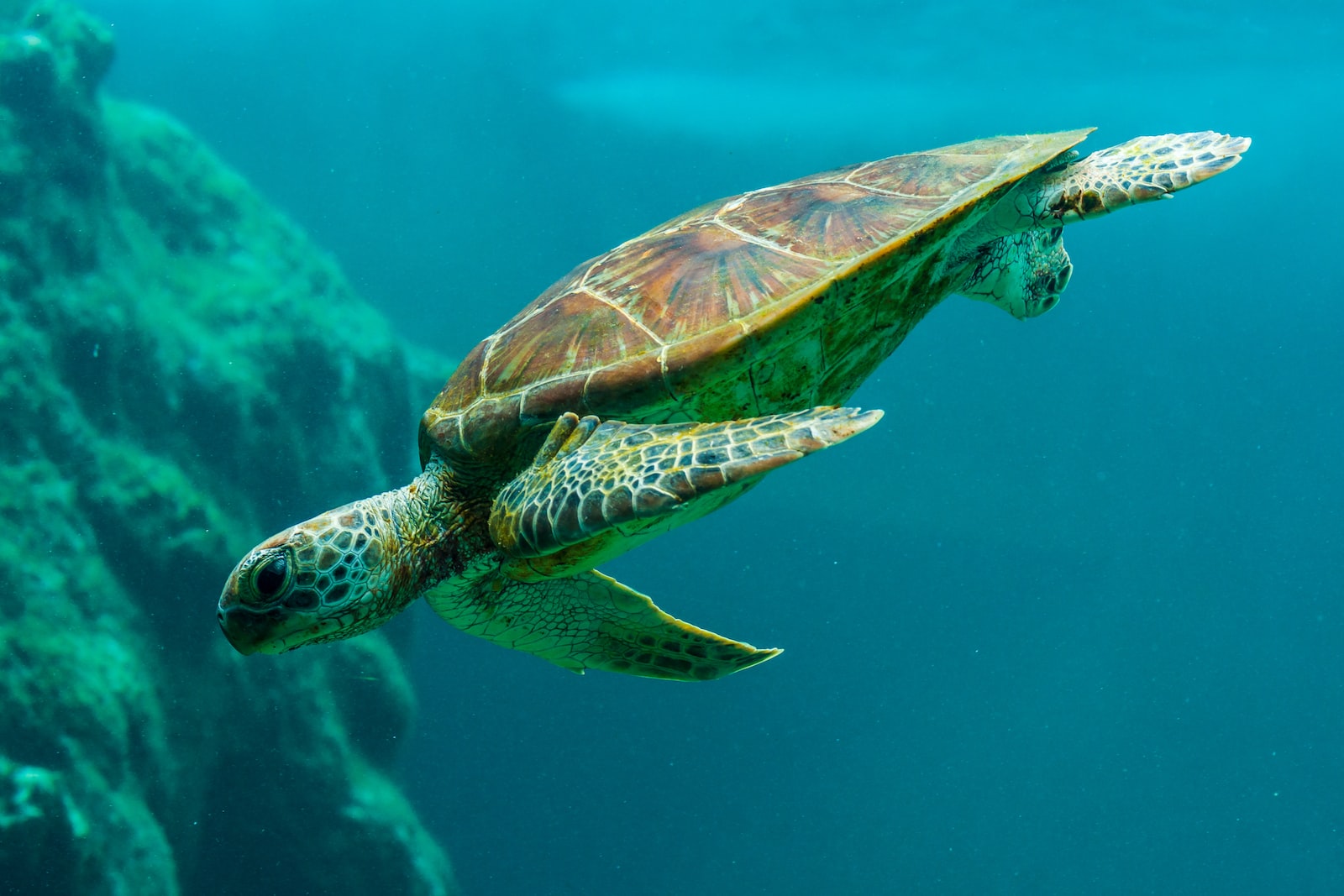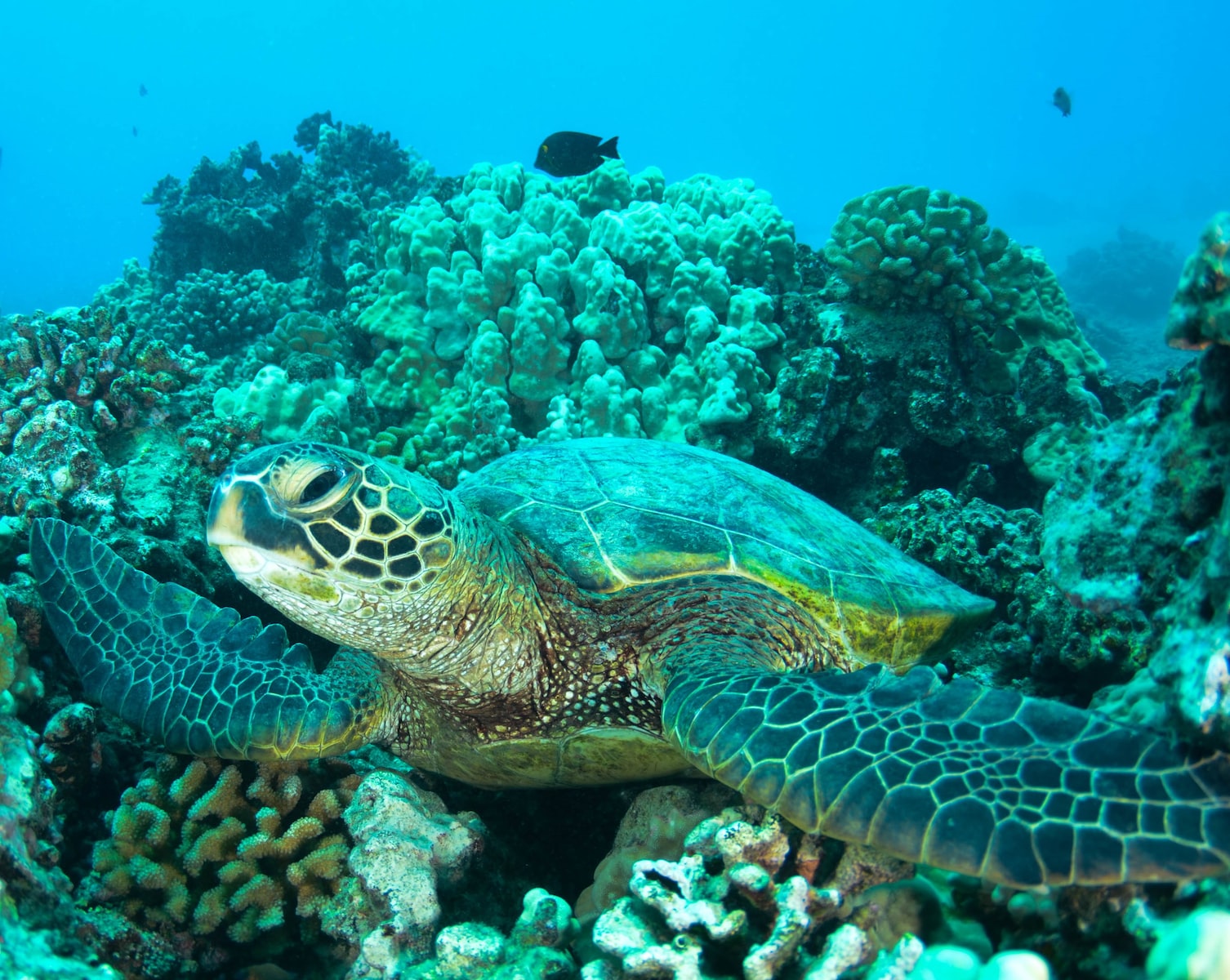Sea turtles are one of the most beloved creatures in our oceans, but many people wonder: Are sea turtles friendly? The answer may surprise you. For centuries, humans have been cultivating a unique and intricate bond with sea turtles.
They can be gentle giants or fierce predators depending on their environment. In this blog post, we’ll explore the fascinating relationship between humans and sea turtles – from interesting facts to how you can help protect them in the wild. So join us as we dive into whether sea turtles are truly friendly – and why it matters.

Table of Contents:
- Sea Turtles: Overview
- Are Sea Turtles Friendly?
- Interesting Facts About Sea Turtles
- Caring for Sea Turtles in Captivity
- How You Can Help Protect Sea Turtles in the Wild
- FAQs in Relation to Are Sea Turtles Friendly
- Conclusion
Sea Turtles: Overview

Sea turtles are a diverse group of reptiles that inhabit the world’s oceans. There are seven species of sea turtles, all belonging to the family Cheloniidae: green, hawksbill, Kemp’s ridley, leatherback, loggerhead, olive ridley and flatback. These species differ in size and coloration but share certain physical characteristics such as a streamlined body shape with flippers instead of feet for swimming.
A green sea turtle reaches up to 3-4 feet in length and weighing as much as 300 pounds, are the most widely encountered type of sea turtle. Other species include hawksbills which have an elongated beak-like mouth; Kemp’s Ridley which has a greyish carapace (shell); leatherbacks which have no hard shell; loggerheads with large heads and strong jaws; olive ridleys with heart-shaped shells; and flatbacks found only in Australia.
Habitat and Distribution:
Sea turtles live mainly in tropical or subtropical waters throughout the world’s oceans except for some subarctic areas like Alaska where they may migrate seasonally for feeding purposes. They usually stay close to shorelines where there is plenty of food available but will occasionally travel hundreds or even thousands of miles away from their nesting grounds during migration periods.
Most sea turtles feed on jellyfish, algae, seagrass beds or other marine plants depending on their particular species. Green turtles typically graze on seagrasses while a hawksbill sea turtle prefer sponges as part of their diet. Loggerheads often consume molluscs such as clams and a leatherback sea turtle will mostly feed on jellyfish tentacles due to their lack of teeth necessary for chewing solid foods like crabs or shrimp that other sea turtle species eat regularly.
In order to ensure the preservation of sea turtles, it is imperative that we gain an understanding of their behavior and habitats. With this knowledge in mind, let’s explore whether sea turtles can be friendly with humans or other animals.
Are Sea Turtles Friendly?

Sea turtles are widely adored, but can they be considered friendly? It depends. Sea turtles can have contact with humans and other creatures, yet it is necessary to safeguard them from any damage through preservation efforts.
Interactions with Humans:
In general, sea turtles tend to keep their distance from people. They can become curious when presented with food or if approached slowly and cautiously by a human swimmer. Some species may even approach boats for a closer look or rest on the surface near swimmers. But it’s important to remember that these interactions should only take place under controlled circumstances where there is no risk of harming the animal.
Sea turtles frequently build strong affiliations with other oceanic creatures, including dolphins, whales, sharks and fish. These relationships help sea turtles survive in their environment since they rely heavily on each other for protection against predators like killer whales and large sharks that prey upon them while hunting for food at sea.
Regrettably, because of humankind’s activities such as overfishing, plastic contamination and habitat destruction, numerous types of ocean turtles are now facing extinction or being threatened globally. To ensure their survival in our oceans for future generations to enjoy them too, conservation efforts such as beach cleanups and supporting organizations dedicated to protecting these creatures must be taken seriously.
Sea turtles are usually docile creatures, but can become defensive when provoked. Let’s investigate some intriguing facts about sea turtles that you may not be aware of, bearing in mind their tendency to become defensive if provoked.
Interesting Facts About Sea Turtles

Sea turtles have some of the longest lifespans in the animal kingdom. Most sea turtles live for 30-50 years, while some may even survive up to a century. Sea turtles reproduce slowly compared to other animals, with females laying eggs every 2-3 years. Clutches of sea turtles can range in size from 40-200 eggs, varying by species.
Migration patterns vary depending on the type of sea turtle. Some migrate long distances across oceans while others stay close to their nesting grounds year round. All sea turtles are capable swimmers and use ocean currents to help them move around quickly and efficiently over large areas of open water.
Sea turtles boast a suite of adaptations that grant them the capability to survive in their marine habitat, such as hard shells which ward off predators; flippers which enable them to glide through water with grace and agility; sharp beaks ideal for capturing prey; salt glands that sift out surplus sodium ingested when they imbibe seawater; and eyes adapted to perceive both above and below sea level. These special features render sea turtles ideally suited for life in the ocean. Keywords: Adaptations, Survive, Marine Habitat, Hard Shells, Flippers, Sharp Beaks, Salt Glands, Eyes Adapted.
Sea turtles possess an impressive sense of direction due to their internal magnetic compass, which helps them return home after long migrations across the ocean. This is especially useful during nesting season when female sea turtles travel back to the beach where they were born decades prior.
Sea turtles are fascinating creatures with a variety of interesting adaptations and behaviors that make them unique in the animal kingdom. Caring for sea turtles in captivity necessitates a thorough comprehension of their requirements, so it’s critical to have an understanding of them before attempting such a task.
Caring for Sea Turtles in Captivity

Caring for sea turtles in captivity requires specialized knowledge and a commitment to providing the best possible environment. Housing requirements vary depending on the type of turtle, but all need ample space with plenty of water and land areas, as well as proper filtration systems. Temp must be kept track of vigilantly, since some species are more delicate than others. Health concerns for captive sea turtles include diseases like shell rot and metabolic bone disease due to inadequate nutrition or improper lighting. It is important to research any potential health issues before bringing home a new pet turtle.
Responsible pet ownership includes providing adequate housing, food, and medical care; avoiding overcrowding; cleaning tanks regularly; maintaining good water quality; monitoring temperature levels; and handling turtles correctly when necessary. No wild turtles should be taken unless they are being aided by an approved professional who can assess their state before setting them free.
Idioms such as “in over your head” may help readers understand that owning a pet turtle comes with certain responsibilities that require specific knowledge about how to provide them with an appropriate living environment that meets their needs while keeping them healthy and safe. Colloquialisms like “a piece of cake” may help readers understand that caring for sea turtles doesn’t have to be difficult if you do your research ahead of time so you know what’s expected of you before taking one home as a pet. Keywords such as “temperature,” “nutrition,” “water quality,” etc., will ensure search engine optimization so people looking for information about caring for sea turtles in captivity can find this article easily online.
Caring for sea turtles in captivity requires dedication and commitment, but it can be a rewarding experience. Having the correct info and materials, you can contribute to guarding these remarkable animals in their native environment too. Participating in beach cleanups and backing organizations focused on safeguarding sea turtles are two ways to assist with conservation initiatives.
How You Can Help Protect Sea Turtles in the Wild

Safeguarding sea turtles is a worldwide issue, and there are numerous approaches to assist. Participating in beach cleanups is an excellent way to protect these gentle creatures. Beach cleanups involve removing debris from the shoreline that could be harmful to wildlife such as plastic bags, fishing line, and glass bottles. This helps keep beaches safe for nesting turtles and their sea turtle hatchlings while also preventing marine animals from becoming entangled or ingesting hazardous materials. You can join existing beach cleanup initiatives or organize your own with friends or family members.
Supporting organizations dedicated to conservation efforts is another great way to help protect sea turtles. Organizations committed to safeguarding sea turtles strive to investigate, teach, and promote their protection across the globe. Consider donating money or time if you’re able – even small contributions can make a big difference. Additionally, by staying informed about current issues affecting sea turtle populations you will be better equipped to spread awareness among your friends and family when possible.
Finally, reducing your use of single-use plastics is key in protecting sea turtles from pollution-related harm such as entanglement or ingestion of microplastics which may cause serious health problems down the road. Making simple lifestyle changes like bringing reusable water bottles instead of buying disposable ones and using cloth grocery bags rather than plastic can have a huge impact on our oceans’ health – so start making those swaps today.
FAQs in Relation to Are Sea Turtles Friendly

Do sea turtles help humans?
Yes, sea turtles help humans in many ways. They act as indicators of healthy marine ecosystems and provide valuable ecosystem services such as nutrient cycling and waste removal. Sea turtles are seen as a beautiful and culturally meaningful presence, which has an effect on the tourism industry. Sea turtles also serve an important role in food webs by providing a source of prey for other species while helping keep populations of organisms that can damage coral reefs in check.
Are sea turtles gentle?

Yes, sea turtles are generally gentle creatures. Sea turtles typically have a tranquil nature and tend to steer clear of any potential conflicts with humans or other animals. Sea turtles rarely bite unless provoked and even then their bites are usually not strong enough to cause any real damage. Although they may appear intimidating due to their size, these majestic reptiles typically pose no threat when encountered in the wild or in captivity.
Is it OK to touch a sea turtle?
No, it is not OK to touch a sea turtle. Federal and state regulations forbid touching sea turtles, as doing so may incur fines or other consequences. Additionally, contact with humans can cause stress for the animals and disrupt their natural behaviors. If you want to observe a sea turtle from close up, do so from a distance that does not disturb its activities or environment.
Conclusion

We hope this article has answered your question, “Are sea turtles friendly?” Sea turtles are generally gentle and non-aggressive creatures. Sea turtles may not be as social or affectionate as other pets, but with proper care and environment, they can make great companions for those seeking a unique pet. With proper research and understanding of these majestic animals’ needs in captivity and out in the wild, we can help ensure that future generations will get to experience them too.
Discover how friendly sea turtles are and learn more about their care on AltPet.net! Our expert-curated content will help you make the best decisions for your pet turtle’s health and happiness.

